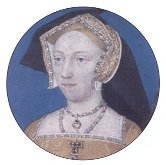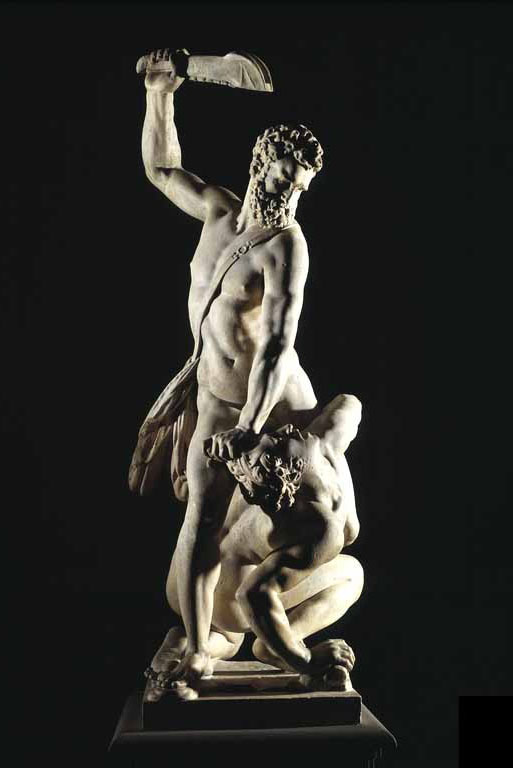|
Saint George's Fields
St George's Fields was an area of Southwark in South London, England. History Originally the area was an undifferentiated part of the south side of the Thames, which was low-lying marshland unsuitable even for agricultural purposes. There is evidence of Roman occupation. As at Lambeth Marsh, the settlement was built on raised through roads over the marsh lands. These were likely summer residences, for in winter the land was under water. A monastery is known to have existed at Bermondsey before 715 AD. Bermondsey is likely to have been a higher, drier spot in an otherwise marshy area. The area was part of the king's demesne. In 1082, according to the "Annales Monasterii de Bermundeseia", Alwinus Child obtained a royal license to found a monastery dedicated to St Saviour, most likely on the site of the earlier one. In 1086, the monastery became part of the Cluniac network under the Priory of St Mary's of La Charité-sur-Loire. Bermondsey Priory later acquired additional pr ... [...More Info...] [...Related Items...] OR: [Wikipedia] [Google] [Baidu] |
Roque 1746 London D3
Roque ( ) is an American variant of croquet played on a hard, smooth surface. Popular in the first quarter of the 20th century and billed "the Game of the Century" by its enthusiasts, it was an Roque at the 1904 Summer Olympics, Olympic sport in the 1904 Summer Games, replacing croquet at the 1900 Summer Olympics, croquet from the previous games. Roque court and equipment Roque is played on a hard sand or clay 30 by 60 foot (length), foot (approximately 9 by 19 m) court bordered by a boundary wall, a curb bevelled at the ends to form an octagon. Players use this wall to balls similarly to how billiard balls are played off the cushions of a billiard table. The wickets, called arches, are permanently anchored in the court. The arches are narrow as in professional six-wicket croquet. The court has ten arches in seven points configured in a double diamond (or figure-8). The two farthest end points and the central point of the figure-8 are double arches (one after the oth ... [...More Info...] [...Related Items...] OR: [Wikipedia] [Google] [Baidu] |
Geraldine Mary Harmsworth Park
Geraldine Mary Harmsworth Park is a public park in Kennington, South London. Maintained by the London Borough of Southwark, it is bounded by Lambeth Road, Kennington Road, St George's Road and Brook Drive. It covers an area of . The grounds of the park surround its central feature, the Imperial War Museum London. History The park was opened in 1934 after the land was gifted to the 'splendid struggling mothers of Southwark' by Harold Harmsworth, 1st Viscount Rothermere. The park was named in remembrance of Rothermere's mother, Geraldine Mary Harmsworth. The land had previously been the grounds of the Dog and Duck tavern and later the Bethlem Hospital, after which the freehold was purchased by Rothermere following the relocation of the hospital to Surrey. The hospital building, constructed between 1812 and 1814, was largely demolished, with the remaining central portion being leased to the government's First Commissioner of Works to accommodate the Imperial War Museum. The park r ... [...More Info...] [...Related Items...] OR: [Wikipedia] [Google] [Baidu] |
Philip II Of Spain
Philip II (21 May 152713 September 1598), sometimes known in Spain as Philip the Prudent (), was King of Spain from 1556, King of Portugal from 1580, and King of Naples and List of Sicilian monarchs, Sicily from 1554 until his death in 1598. He was also ''jure uxoris'' King of England and List of Irish monarchs, Ireland from Wedding of Mary I of England and Philip of Spain, his marriage to Queen Mary I in 1554 until her death in 1558. Further, he was Duke of Milan from 1540. From 1555, he was Lord of the Seventeen Provinces of the Habsburg Netherlands, Netherlands. The son of Emperor Charles V and Isabella of Portugal, Holy Roman Empress, Isabella of Portugal, Philip inherited his father's Spanish Empire in 1556, and succeeded to the Kingdom of Portugal, Portuguese throne in 1580 following a dynastic crisis. The Spanish conquests Spanish conquest of the Inca Empire, of the Inca Empire and of the Philippines, named in his honor by Ruy López de Villalobos, were completed during h ... [...More Info...] [...Related Items...] OR: [Wikipedia] [Google] [Baidu] |
Mary I Of England
Mary I (18 February 1516 – 17 November 1558), also known as Mary Tudor, was Queen of England and Ireland from July 1553 and Queen of Spain as the wife of King Philip II from January 1556 until her death in 1558. She made vigorous attempts to reverse the English Reformation, which had begun during the reign of her father, King Henry VIII. Her attempt to restore to the Church the property confiscated in the previous two reigns was largely thwarted by Parliament but, during her five-year reign, more than 280 religious dissenters were burned at the stake in what became known as the Marian persecutions, leading later commentators to label her "Bloody Mary". Mary was the only surviving child of Henry VIII by his first wife, Catherine of Aragon. She was declared illegitimate and barred from the line of succession following the annulment of her parents' marriage in 1533, but was restored via the Third Succession Act 1543. Her younger half-brother, Edward VI, succeede ... [...More Info...] [...Related Items...] OR: [Wikipedia] [Google] [Baidu] |
Edward VI
Edward VI (12 October 1537 – 6 July 1553) was King of England and King of Ireland, Ireland from 28 January 1547 until his death in 1553. He was crowned on 20 February 1547 at the age of nine. The only surviving son of Henry VIII by his third wife, Jane Seymour, Edward was the first English monarch to be raised as a Protestant. During his reign, the realm was governed by a regency council because Edward never reached maturity. The council was first led by his uncle Edward Seymour, Duke of Somerset (1547–1549), and then by John Dudley, Duke of Northumberland (1550–1553). Edward's reign was marked by many economic problems and social unrest that in 1549 erupted into riot and rebellion. An expensive Rough Wooing, war with Kingdom of Scotland, Scotland, at first successful, ended with military withdrawal from Scotland and Boulogne-sur-Mer in exchange for peace. The transformation of the Church of England into a recognisably Protestant body also occurred under Edward, who too ... [...More Info...] [...Related Items...] OR: [Wikipedia] [Google] [Baidu] |
Jane Seymour
Jane Seymour (; 24 October 1537) was Queen of England as the third wife of King Henry VIII from their marriage on 30 May 1536 until her death the next year. She became queen following the execution of Henry's second wife, Anne Boleyn, who was accused by Henry of adultery after failing to produce a male heir. Jane, however, died of postnatal complications less than two weeks after the birth of her only child, the future King Edward VI. She was the only wife of Henry VIII to receive a queen's funeral; and Henry was later buried alongside her remains in St George's Chapel, Windsor Castle. Early life Jane, the daughter of Sir John Seymour and Margery Wentworth, was most likely born at Wulfhall, Wiltshire, although West Bower Manor in Somerset has also been suggested. Her birth date is not recorded; various accounts use anywhere from 1504 to 1509, but it is generally estimated at between 1508 and 1509. Through her maternal grandfather, she was a descendant of King Edward III's ... [...More Info...] [...Related Items...] OR: [Wikipedia] [Google] [Baidu] |
Bermondsey Abbey
Bermondsey Abbey was an English Benedictine monastery. Although generally regarded as having been founded in the 11th century, it had a precursor mentioned in the early 8th century. It was centred on what is now Bermondsey Square, the site of Bermondsey Market, Bermondsey, in the London Borough of Southwark, southeast London, England. Foundation A monastery is known to have existed at Bermondsey before 715 AD, when it was a Surrey colony of the important Mercian monastery of Medeshamstede, later known as Peterborough. Though surviving only in a copy written at Peterborough in the 12th century, a letter of Pope Constantine (708–715) grants privileges to a monastery at ''Vermundesei''. This monastery most likely continued, probably as a secular minster, at least until the 9th-century Viking invasions. Nothing more is heard of any church at Bermondsey until 1082, when, according to the "Annales Monasterii de Bermundeseia", a monastery was founded there by one Alwinus Chil ... [...More Info...] [...Related Items...] OR: [Wikipedia] [Google] [Baidu] |
York House, Strand
York House (formerly Norwich Palace or Norwich Place) was one of a series of grand mansions that formerly stood on the Strand, the principal route from the City of London to the Palace of Westminster. Norwich Palace The residence was originally known as Norwich Palace when it was built as the London bishop's palace of the Bishops of Norwich not later than 1237. On 4 February 1536 it was given by King Henry VIII to his favourite, Charles Brandon, 1st Duke of Suffolk, in exchange for Suffolk House in Southwark, the Bishop of Norwich having been provided with a new residence at Cannon Row in Westminster. York House The residence was subsequently known as York House after it was granted to the Archbishop of York in 1556, and it retained that name for the rest of its existence. Its neighbour to the west was Suffolk House (later Northumberland House), the London townhouse of the Earls of Suffolk (a branch of the Howard family headed by the Dukes of Norfolk), which was sold in ... [...More Info...] [...Related Items...] OR: [Wikipedia] [Google] [Baidu] |
Suffolk Place
Suffolk Place (or Suffolk House) was a mansion house located on the west side of Borough High Street in Southwark, Surrey, on the south bank of the River Thames opposite the City of London. It was the London Townhouse (Great Britain), town house of the Duke of Suffolk, Dukes of Suffolk, and was located near Winchester Palace, London seat of the Bishop of Winchester. The position was highly prominent as Borough High Street (or Southwark Street) was the principal thoroughfare leading from London Bridge and the City of London, to Canterbury and Dover, a route used by monarchs and others, including the pilgrims in Chaucer's Canterbury Tales. It was built in the fifteenth century and rebuilt in fine Renaissance style in 1522 by Charles Brandon, 1st Duke of Suffolk (c.1484-1545) a favourite of King Henry VIII of England, Henry VIII. On 4 February 1536 it was taken over by King Henry VIII who exchanged it with Brandon for Norwich Place on the Strand, London, Strand, on the north side of ... [...More Info...] [...Related Items...] OR: [Wikipedia] [Google] [Baidu] |






